Lithuanian Food Dishes: Basic Overview
Common Ingredients
Common Cooking Methods
Courses
Meals
Key Taste
Eating Etiquette
Meal Presentation
Culinary Festivals
Influence and Fusion
Popular Types of Lithuanian Dishes
-
Soups and Stews
Rich soups and stews usually appear in Lithuanian meals as part of the appetizer or the main course.
These dishes are typically prepared with vegetables, seafood or meat, and a liberal amount of dairy products.
Seasonal soups often come with many vibrant colors.
-
Dumplings
Lithuanians enjoy many types of dumplings, which create one of their national dishes.
Dumplings in Lithuania are often filled with savory ingredients and boiled until soft and flavorful.
-
Cakes and Pastries
There are many types of cakes and pastries in Lithuania.
These dishes are usually made with wheat flour or rye flour, milk, butter, sugar, dried fruits, and spices.
Certain Lithuania cakes and pastries are specifically designed for special holidays and occasions.
-
Snacks
Fried dishes and pastries are popular snacks in Lithuania.
Many Lithuanian snacks are savory bites that are ideal for serving alongside alcoholic beverages.
Some snacks are also great entrees and street food dishes.
Lithuanian dishes are specialties closely associated with Lithuania, a Baltic country. The core ingredients of these dishes are usually meat (especially pork), grains (like rye), potatoes, and dairy products.
Many food offerings in Lithuania are similar to the dishes of Poland , a country that once shared the same state as Lithuania. Various cuisines in Eastern Europe, the Baltic region, and Scandinavia also play a role in the development of Lithuanian fare.
Keep on reading, and you will discover the common traits of traditional Lithuanian food. I will also delve into the global popularity and healthy aspects of such dishes.
Next, I will offer you helpful information about the 18 most popular dishes in Lithuania, followed by an overview of Lithuanian cuisine and recommended beverages for food and drink pairings.
18 Most Popular Lithuanian Dishes with Filters
Get ready to uncover the 18 most widely enjoyed dishes in Lithuanian. To explore this section more easily, use my advanced filters, like alphabetical sorting, main ingredients, taste, cooking methods, dish types, courses, and global popularity.
As you scroll down, you will see more filters based on specific culinary styles, such as the various labels for traditional, national, and street foods.
Cepelinai
- National
- Traditional
Cepelinai is an iconic Lithuanian dish made by stuffing potato dumplings with spiced minced pork or cheese curds. Locals serve it with plenty of sour cream and rich sauces.
In the past, cepelinai was called didzkukuliai (“dumplings”). But when this dumpling dish became popular in Lithuania in the early 20th century, people renamed it cepelinai (“zeppelin”) due to the similar shapes between them.
Today, this type of bouncy, chewy, and flavorful dumpling is considered the crown jewel of Lithuanian recipes.
Šaltibarščiai
- National
- Traditional
Šaltibarščiai is a common Lithuanian beet soup with a beautiful purple color. Similar to borscht in many Slavic countries, it is often served cold as an appetizer or a main dish.
Besides beets, šaltibarščiai includes various herbs. This attractive soup is commonly enjoyed in summer as a sign that warm weather is coming.
The best accompaniments for šaltibarščiai are fried or boiled potatoes, hard-boiled eggs, and grated cucumbers
Kugelis
- National
- Traditional
Kugelis, also known as bulviu plokstainis (“flat potato dish”), is a traditional potato pudding dish in Lithuanian cuisine. Its core ingredients are grated potatoes, eggs, onions, bacon, milk, and spices.
Kugelis is baked until it achieves a crispy, golden brown exterior and a soft, creamy interior. This hearty and spicy potato pudding is suitable for celebratory meals, such as Christmas, Easter, and birthdays.
To enhance the flavor of kugelis, Lithuanians often serve it with sour cream, lingonberry jam, or applesauce.
Bigusas
- Traditional
Bigusas, also known as bigos or hunter’s stew, is a hearty cabbage stew deeply rooted in both Lithuanian and Polish cuisine. It dates back to medieval times and is often served hot with boiled potatoes, rye bread, or wine.
Bigusas consists of sauerkraut, fresh cabbage, chopped meat (such as pork, beef, game meat) or smoked sausage, onions, carrots, and simple spices. These ingredients result in a rich, savory, and flavorful stew.
As a comforting one-pot dish, bigusas is especially popular during cold winters and festive occasions, like Christmas and weddings.
Bulviniai Blynai
- Traditional
Bulviniai blynai, or potato pancakes, is a beloved dish in Lithuania. It is made by mixing grated potatoes with eggs, flour, and simple seasoning, then deep-frying the pancakes until golden and crispy on the outside.
While potato pancakes possibly appeared first in Eastern Europe, they are now a favorite breakfast dish with many Lithuanian families. Locals often consume bulviniai blynai with plenty of sour cream, applesauce, or lingonberry.
In addition, bulviniai blynai is also a common sight during festive occasions like Kūčios (Christmas Eve) and Užgavėnės (Shrove Tuesday), the latter featuring pancakes as a must-have dish.
Varškėčiai
- Traditional
Varškėčiai refers to Lithuanian cottage cheese dumplings or pancakes, which are a classic dessert and snack in the country. It is also a well-liked breakfast choice for many Lithuanian children.
Varškėčiai is made from a simple dough consisting of flour, eggs, and sometimes potatoes. The dough is rolled out, filled with a sweetened cottage cheese mixture, and boiled until the dumplings float to the top.
As a versatile dish, tangy varškėčiai goes well with various toppings, including sour cream, jam, melted butter, or fresh berries.
Balandėliai
- Traditional
Balandėliai, literally “little doves” or “lovebirds,” is a type of Lithuanian cabbage roll stuffed with minced pork or beef, cooked rice, eggs, onions, and herbs. People believe that the fierce Tatars brought this dish to Lithuania in the 14th or 15th century.
As the name balandėliai suggests fidelity, this Lithuanian roll is a popular dish at weddings, though locals also prepare it for other holiday meals. Sour cream is a typical condiment for balandėliai.
Skilandis
- Traditional
Skilandis is a classic Lithuanian sausage originating from the Dzukija region. It is prepared by stuffing a mixture of minced pork, garlic, salt, and pepper into a pig’s bladder or stomach and smoking it for several days.
While skilandis has a few things in common with haggis, Scotland’s famous dish, the Lithuanian specialty is dry smoked and left to mature to develop a distinctly smokey, savory taste and a long shelf life.
Suitable for serving either cold or grilled, skilandis is customarily cut into thin slices and served with rye bread, mustard, and pickles.
Zrazai
- Traditional
Zrazai, known elsewhere as zrary, is a well-known beef roll or roulade dish in Lithuania and Poland. Influenced by classic French cuisine, it appeared between the 17th century and the 19th century.
The preparation of zrazai involves tenderizing beef slices and rolling them around a savory filling. Potatoes, eggs, vegetables, and mushrooms are classic choices.
Next, people secure zrazai rolls with toothpicks or string, then braise or simmer them in a flavorful broth or sauce. The rolls are typically served with this very broth, mashed potatoes, and kasha (roasted buckwheat grains).
Kibinai
- Traditional
Kibinai is a traditional Lithuanian pastry originating from the ethnic Karaite people who migrated to the country in the Middle Ages. Also known as the Karaim, these people are followers of Karaite Judaism and originally came from Crimea.
Kibinai is a savory crescent-shaped pie that Karaim people eat as a snack on its own or with soups. While classic kibinai only contains mutton and onions, there are now more types of fillings for kibinai, such as lamb, chicken, cheese curd, jam, etc.
The best destination for kibinai in Lithuania is Trakai, a historic city in the southeastern region. A large Karaim community lives there and offers excellent kibinai.
Koldūnai
- Traditional
Koldūnai is the Lithuanian version of kalduny (“sorcerer” or “magician”), a stuffed dumpling dish popular in many European countries. It is a tasty snack, appetizer, or main dish, especially when served with sour cream, fried bacon bits, or butter.
A typical koldūnai has a pocket of dough filled with minced pork or beef, onions, and spices, although mushrooms, cheese, and potatoes are also popular variations. The dumpling is then boiled until tender.
Chebureki
- Street Food
Chebureki is a beloved crescent-shaped turnover in Lithuanian cuisine. It is made of a single piece of unleavened dough folded over seasoned minced meat, spices, and onions and deep-fried in sunflower oil or corn oil.
If you ask Lithuanians about the country’s best street food, chebureki is certainly a popular candidate. This turnover is also a well-liked snack and entree that is often accompanied by a side of yogurt, sour cream, or spicy sauce.
Chebureki hails from Crimean Tatar cuisine and can be found in various restaurants and street food stalls in Eastern European and post-Soviet countries.
Kepta Duona
- Street Food
Kepta duona, literally “fried bread,” is a popular Lithuanian snack made by frying strips of dark rye bread in oil, seasoning them with garlic, and serving them with a mayonnaise and cheese dip.
Despite being high in fat, crunchy fried bread is a cheap and easy-to-make comfort food for many Lithuanians. Locals often enjoy it with beer while watching a game of basketball, the sport that is considered the second religion of Lithuania.
Žirniai Su Spirgučiais
- Traditional
Žirniai su spirgučiais, literally “peas with cracklings,” is an ideal Lithuanian snack to serve with beer. Its main ingredients are yellow peas, which are allegedly sweeter and milder than green peas.
To prepare this simple snack, locals boil the peas until tender before frying them with smoked bacon and onions. While the cracklings may remind you of animal fat, žirniai su spirgučiais actually has a savory and nutty taste.
Sakotis
- Traditional
Sakotis, literally “branchy,” is a Lithuanian tree-like cake usually reserved for festive occasions. It is the local version of the spit cake, a beautiful and elaborately prepared cake for Christmas and weddings in many European countries.
The main ingredients of sakotis are just flour, butter, and other baking essentials. Basically, it is a large, hollow tree cake with various “spikes” around the edge; the “spikes” are crunchy and taste like cookies.
To make sakotis achieve its iconic shape, people pour the batter onto a rotating spit over an open flame or in a special oven. As the batter cooks, it forms thin layers resembling tree branches or “spikes.”
Sakotis comes in many sizes, from being small enough to fit in your hand to as high as 20 inches. Even better, you don’t have to go to a wedding to eat sakotis: bakeries and even airport gift shops usually have the cake for sale.
Grybukai
- Traditional
Grybukai, literally “little mushroom,” is a traditional Lithuanian Christmas cookie shaped like a mushroom, hence its name. It is usually made during the holiday season to celebrate Christmas and New Year.
The grybukai dough is typically made from flour, butter, sugar, eggs, and vanilla or lemon zest. After molding the cookies into small mushroom caps and stems, people bake them, then decorate them with chocolate or icing to mimic the appearance of mushrooms.
Šimtalapis
- Traditional
Šimtalapis is a well-known Lithuanian cake brought by the Tatars to Lithuania many centuries ago. As its preparation method is rather time-consuming, it is often reserved for special occasions like Christmas or birthdays.
Šimtalapis means “hundred-leaf” or “hundred-layer” since the cake consists of thin crepe-like pancakes stacked atop each other with a sweet filling in between. Common filling ingredients include fruit preserves, raisins, cream, and poppy seed paste.
While šimtalapis is available throughout Lithuania, Alytus, a city in the southern region that has a thriving Tatar community, offers some of the best šimtalapis in the country.
Balta Mišrainė
- Traditional
Balta mišrainė is a sought-after salad in Lithuania, especially during the summer months. While its name translates to “white salad,” it sports many other hues, such as orange and yellow.
Balta mišrainė is a fresh mix of boiled potatoes, boiled eggs, carrots, peas, and mayonnaise. Fresh vegetables such as cucumbers and radishes are sometimes added to the salad.
Lithuanian white salad is a beloved appetizer and side dish at outdoor gatherings, picnics, and barbecues. This delicious salad offers a cool and refreshing complement to many rich and fatty dishes in the country.
Now that you know about the most common dishes in Lithuania, it’s time to explore the popular attributes of local cuisine.
What Are the Common Features of Lithuanian Cuisine?
Learning about the aspects below will help you understand the depth of Lithuanian cuisine.
Due to its historical ties with Poland and Germany, Lithuania shares many popular dishes with these two cuisines.
In addition, historical connections with Slavic countries, such as Russia, Ukraine, and Belarus, also paved the way for dishes from these countries to enter Lithuanian cuisine.
Also, Lithuania’s proximity to the Baltic Sea and historical trading connections with Baltic and Scandinavian countries have led to some influence from these cuisines as well.
The cold and wet climate of Lithuania plays a significant role in shaping its traditional cuisine.
Most importantly, the need for hearty and energy-rich foods to withstand cold winters has led to a preference for rich dishes made from potatoes, grains, and meat, as well as dairy products and preserved food.
The fertile land of Lithuania has made agriculture a key part of its economy and way of life. Grains such as rye, barley, and wheat have been staple crops, influencing the prevalence of bread and porridge in the Lithuanian diet.
In addition, potatoes were introduced in the 17th century and eventually became a central ingredient in many dishes.
Christian traditions have long influenced Lithuanian cuisine through fasting periods and religious feasts. For example, occasions like Christmas and Easter come with the preparation of many special dishes.
What Beverages to Pair With Lithuanian Dishes?
People in Lithuania usually enjoy local dishes with the four following types of beverages.
Beer
As the most popular alcoholic beverage in Lithuania, beer is an excellent choice for many kinds of Lithuanian dishes, especially hearty, savory, and fried specialties. The best recommendations are žirniai su spirgučiais, kepta duona, bigusas, and cepelinai.
Mead
With spicy and fruity undertones, Lithuanian mead (midus) pairs well with dishes that can complement or contrast its sweetness, especially light treats like varškėčiai, sakotis, and grybukai.
Starka
Starka is a distilled alcoholic beverage similar to aged vodka. Its strong and warming flavor profile makes it an ideal beverage for dishes with a robust taste, namely skilandis, balandėliai, and zrazai.
Coffee
The bitter and aromatic profile of Lithuanian coffee is a perfect match for sweet or creamy dishes and desserts, including varškėčiai, šimtalapis, and balta mišrainė.
Have you found your favorite Lithuanian dishes yet? Tell me about your options in the comment section, and if there are dishes worth mentioning, let me know! Don’t forget to share this list of Lithuanian dishes with your friends!



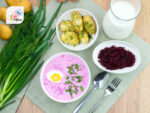
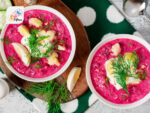
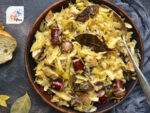

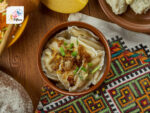
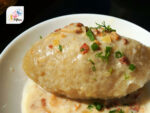
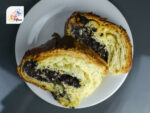
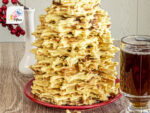
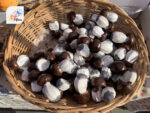
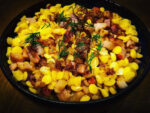
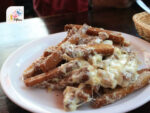
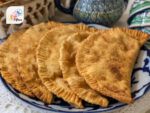
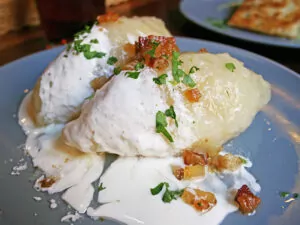
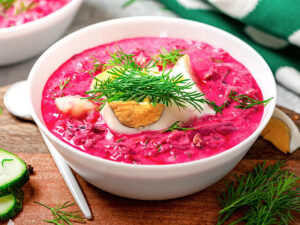
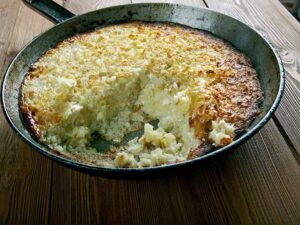
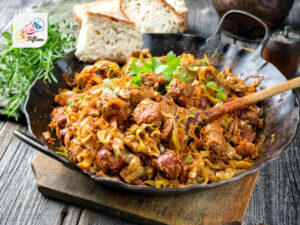
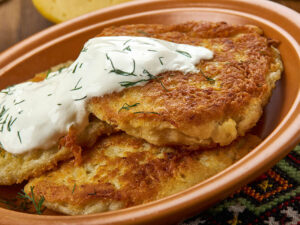
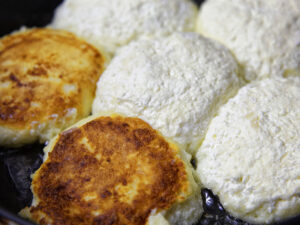
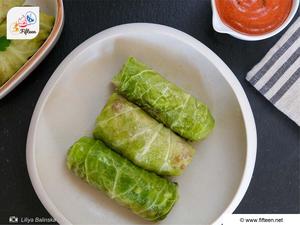
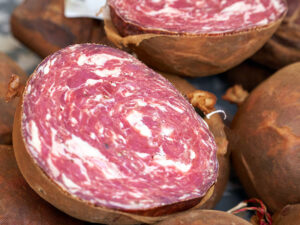
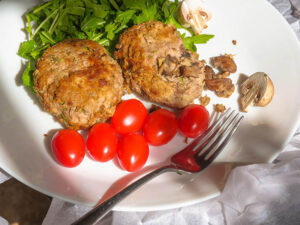
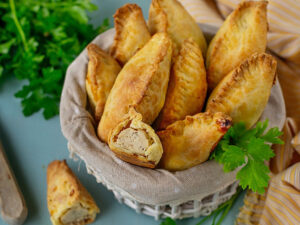
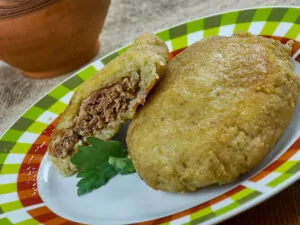
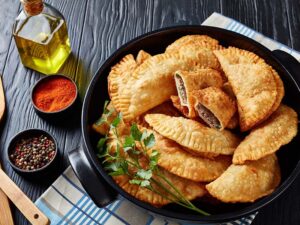
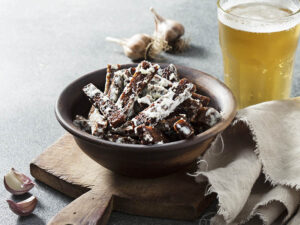
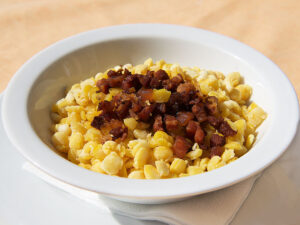
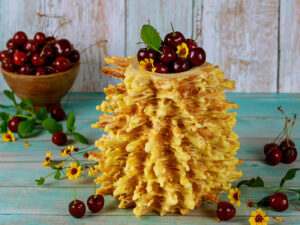
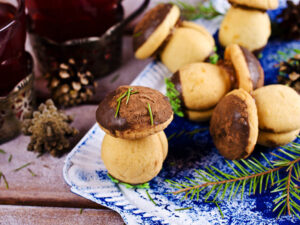
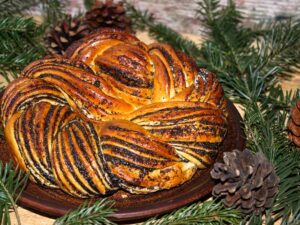
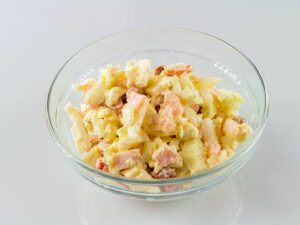
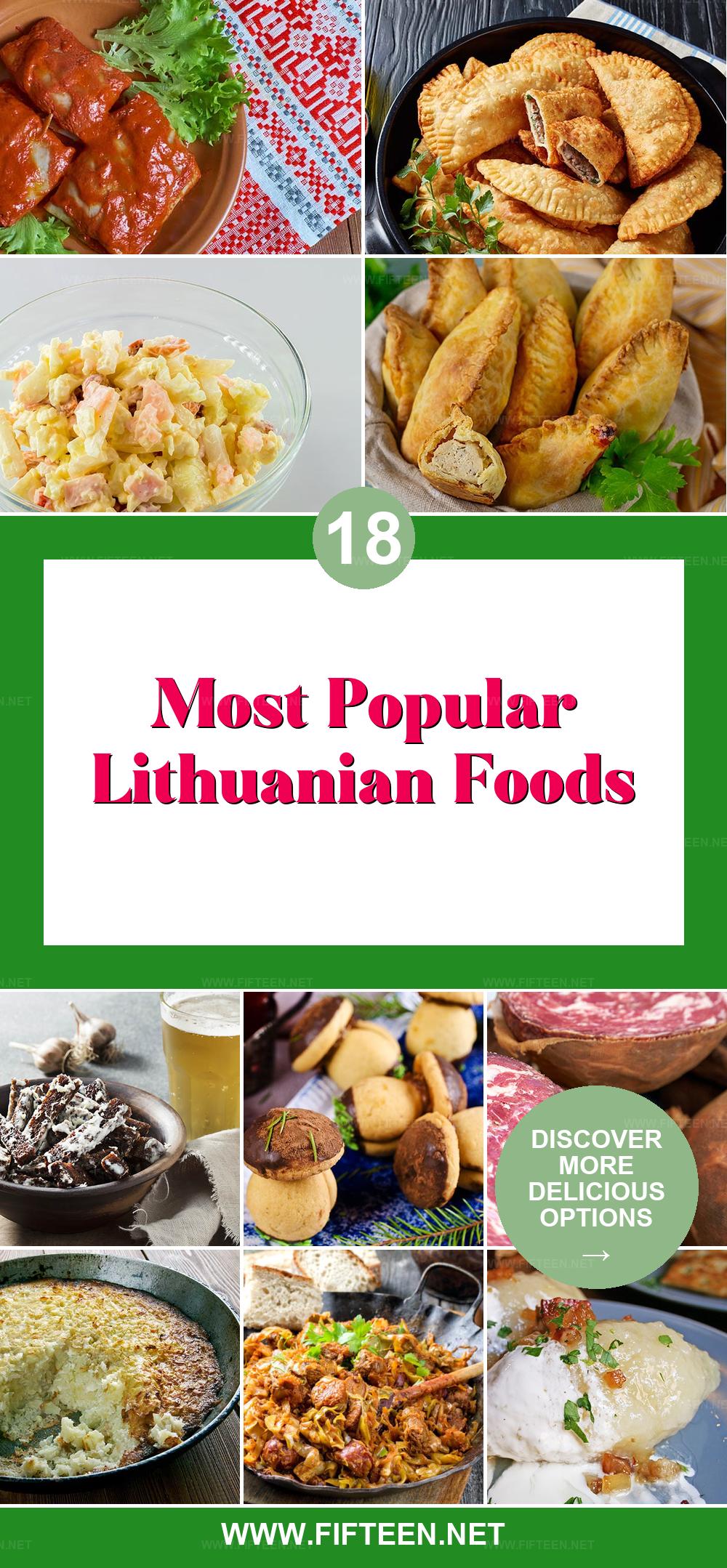
Jamie Scott
Editor in Chief, Senior Content Writer
Expertise
Home Cooking, Meal Planning, Recipe Development, Baking and Pastry, Food Editor, Cooking-video Maker, Western Food Evaluation Expert
Education
Le Cordon Bleu College of Culinary Arts
Local Community College, New York, NY
Jamie Scott is a skilled culinary expert and content creator specializing in Western cuisine. With over 15 years in the culinary field and formal training from Le Cordon Bleu, Paris, Jamie deeply understands how to blend nutrition with delicious flavors. His passion for cooking matches his commitment to making healthy eating accessible and enjoyable.
On Fifteen.net, Jamie brings a fresh perspective to classic dishes and beverages, offering readers insightful recipes, cooking tips, and a fresh view on meal planning that emphasizes taste, health, and simplicity.